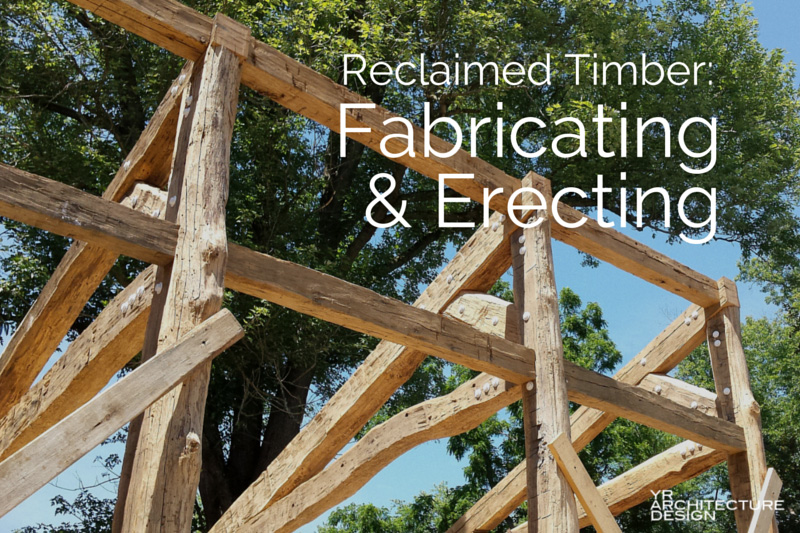Fabricating and erecting timber frames are exciting steps in the design and construction process of timber frame homes. They are also critical steps. Your timber design can be the best in the world, but if it isn’t executed to the highest degree of care and attention to detail, it probably won’t turn out as very well as you’d like. For as much value that you place on your antique timber beams to tell a unique story and be the highlight of the space, you really want to get it right.
We’ve already covered the timber design process and prepping process, but in this article, we share our construction process with reclaimed timber beams on our Fombell Addition in Western PA.
Find a Good, Reputable Timber Frame Company
The first step in fabricating and erecting reclaimed timber frames is to find and use a well-established, reputable timber frame builder. Like any company that you’re considering working with, you want to do your due diligence. Research the company, their values and their previous work experience. Visit their facility and past projects if possible. Remember, this is a very important aspect of your project. You want to find the right fit for you and your project.
For our project, we worked closely with Lancaster County Timber Frames (LCTF) in Lancaster, PA. They have been nothing but a pleasure to work with. They are great at their craft, knowledgeable, pay attention to detail, and really want to get the design intent right. Also, some timber frame companies only assemble the frames – leaving the erection to someone else. Be sure you understand the scope of services each potential company offers as you’re deciding who to use. LCTF not only fabricates timber frames, they also erect them on-site. We felt this was important to ensure the quality put into the fabrication process was also followed through with during the erection stage.
We also had a chance to sit down and discuss our project in more detail to make sure we were all on the same page about aesthetics, joinery, quality, and expectations.


Timber Frame Fabrication
After the timber frame company was selected, our stockpile of timber beams was sent to the timber frame company in Lancaster, where all the pieces were laid out for examination by the craftspeople. In previous posts, we mentioned how also we did this ourselves when the timber was reviewed for structural integrity. This was when we took a stab at where we thought each wood piece would go.
It was nice to review these intentions with the craftspeople who confirmed many of our assumptions. They started tagging beams to locate them in our overall design based on their size, length, and character.

 Staging and tagging our antique timber beams
Staging and tagging our antique timber beams

We had a feeling we wouldn’t have enough timber for the entire project. And LCTF confirmed this suspicion. We were worried because we didn’t want two different kinds of timber on our project, but our team at LCTF didn’t seem too worried. They had been through this before and were confident that they could source similar white oak antique timbers with a similar rough-hewn cut from other locally sources within the state.
That was reassuring to hear! This also reinforced our initial decision to work with LCTF on this project. Their extensive network of suppliers and contacts proved to be a great benefit to our project.
After acquiring the remaining timber beams and with the timber design in hand, the timber frame company created shop drawings for our review. Upon approval, the team spent the next 3 months crafting the antique timber into our timber frames. Occasionally, they would email or call us with a few questions or when things arose (mostly related to some of our steel connections or irregularities posed by the roughly-cut timbers). But for the most part, LCTF was able to create our frames without a hitch.
Timber Frame Erection: Raising the Frames





Because some of the timber frames were connected to structural steel beams, it was nice to see that the welded tabs on the steel beams were coordinated acurately and located so that everything fit together.
Similarily, we had a chance to see how the hidden steel splice plates were installed in the timber frames. The timber frame company had cut a slot in the top of the beams where they could insert the steel plates from above, concealed from view in their final position.


In the end, all frames fit perfectly into place, without any conflicts with adjacent construction. Also, seeing all the timber in their final position, we were able to confirm how nicely our antique timbers blended in with the timber sourced from the other PA supplier!
















